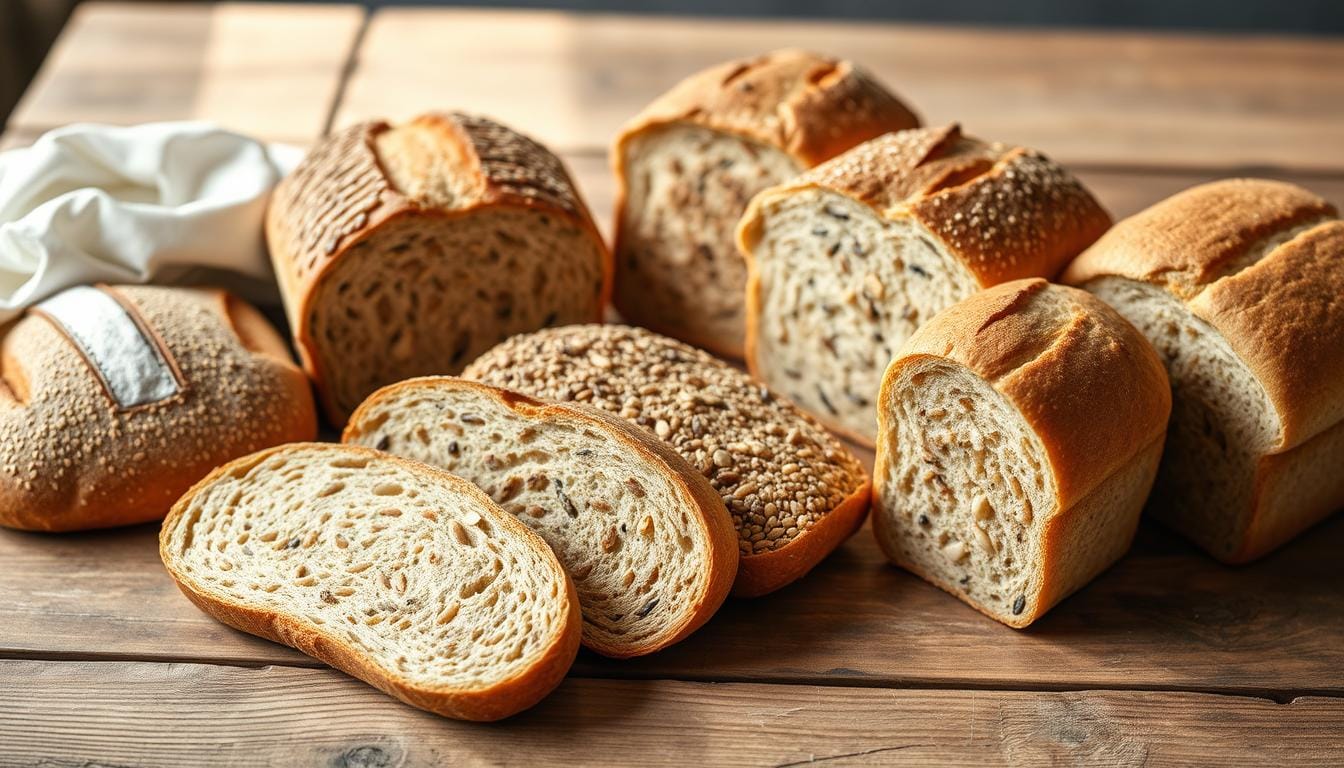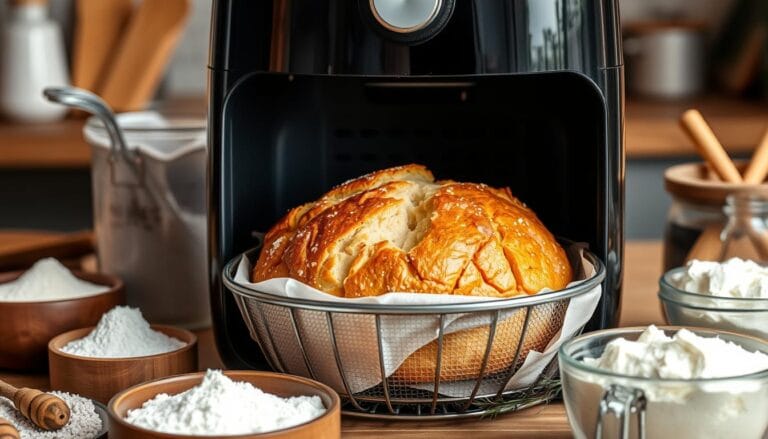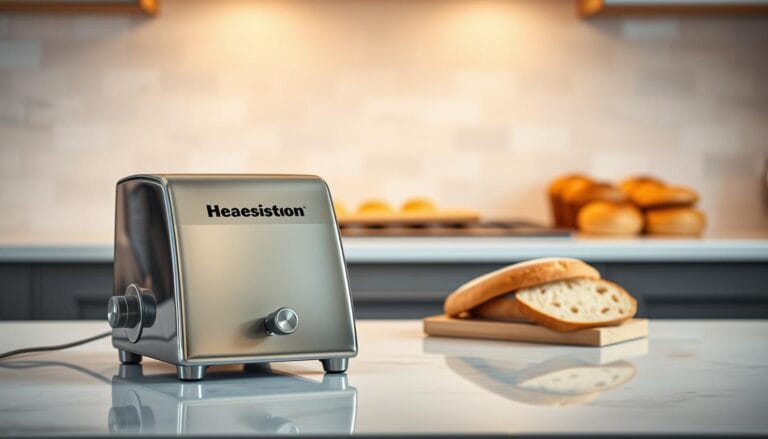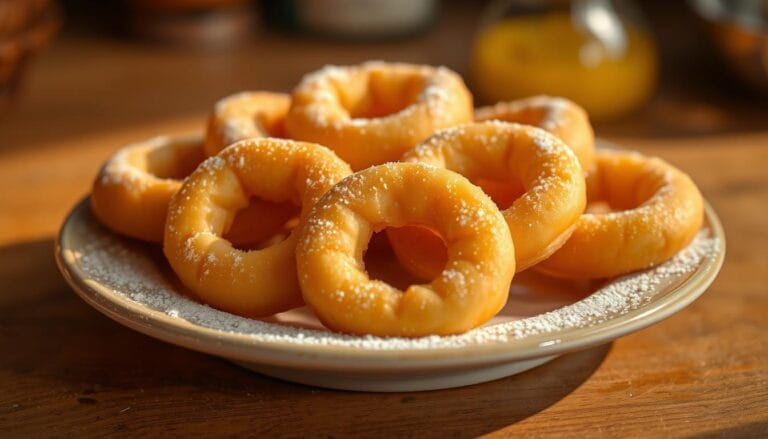Low calorie bread: 5 Delicious Ways to Upgrade Your Diet
Ever looked into your pantry, wondering how to enjoy bread without hurting your health goals? Finding delicious low calorie bread can be a fun journey. It’s filled with hope and sometimes, a bit of disappointment.
Welcome to the world of healthy bread options that can change your diet. Low calorie bread is more than just cutting calories. It’s about making better nutritional choices. Standard white and whole wheat breads have 75-100 calories per slice. But, new low-cal options have just 30-60 calories per slice.
Imagine saving 90 calories every time you choose low calorie bread over traditional. This small swap could save you about 33,000 calories a year. That’s a big deal for your weight management journey.
Modern low calorie bread isn’t a sacrifice. It’s made with flours like almond, coconut, and oat bran. These flours add more nutrients while keeping calories low. Your taste buds and waistline will love these healthy bread options.
Ready to see how low calorie bread can change your eating habits? Let’s explore a world where nutrition and deliciousness meet.
Table of Contents
Understanding Low Calorie Bread Benefits
Low calorie bread can change how you manage your weight and eat. It’s a tasty way to enjoy sandwiches while helping you stay healthy.
Weight Management Advantages
Choosing diet bread can really help with weight loss. A slice of low calorie bread has 30-60 calories, unlike regular bread’s 75-100. This small change can save you about 90 calories per two-slice serving.
- Annual calorie savings can reach up to 33,000 calories
- Potential weight loss of 9-10 pounds per year
- Reduced calorie intake without sacrificing bread enjoyment
Blood Sugar Control Benefits
Low calorie bread often has more fiber, which helps control blood sugar. Most diet bread has 2-3 grams of fiber per slice. This helps keep your energy steady and glucose levels stable.
| Bread Type | Calories per Slice | Fiber Content |
|---|---|---|
| Regular White Bread | 73 | <1g |
| Low Calorie Bread | 30-60 | 2-3g |
| Keto Bread | 30 | 8g |
Nutritional Value Overview
When picking weight loss bread, aim for at least 5 grams of protein per slice. These breads are full of nutrients and help you stay full all day.
Choosing the right low calorie bread can be a strategic step in your nutrition plan.
Calories in Different Types of Bread
Knowing the calorie content of different bread types is key to making better food choices. Whether you’re trying to lose weight or prefer healthier options, understanding nutritional values is essential.
Let’s look at the calorie ranges for various bread types:
- Standard Breads:
- White bread: 75-100 calories per slice
- Whole wheat bread: 75-100 calories per slice
- Pita bread: 75-100 calories per slice
- Higher Calorie Options:
- Baguette: 140-200 calories per slice
- Brioche: 140-200 calories per slice
- Naan: 130-170 calories per slice
- Low Calorie Bread Alternatives:
- Low-calorie bread: 30-60 calories per slice
- Pumpernickel: 80-100 calories per slice
- Rye bread: 80-100 calories per slice
Choosing low calorie bread can save a lot of calories. For example, swapping two slices of regular white bread (150 calories) for low-calorie bread (60 calories) saves 90 calories daily. This could lead to a yearly calorie reduction of almost 33,000 calories!
When picking whole grain or multigrain bread, aim for options with at least 5g of protein and 2-3g of fiber per slice. These nutrients help you feel full and support your health goals.
Essential Components of Low Calorie Bread
Discovering the right ingredients can turn your low calorie bread into a nutritional powerhouse. The secret is in choosing alternative flours and nutrient-rich components. These make multigrain bread both tasty and healthy.
Alternative Flours that Make a Difference
Finding the perfect low calorie bread starts with alternative flour options. High fiber bread uses innovative flours that cut down on calories:
- Almond flour: Low in carbs, high in protein
- Coconut flour: Gluten-free and nutrient-dense
- Oat fiber: Boosts digestive health
- Wheat bran: Adds essential minerals
- Rice bran: Supports metabolism
Fiber: The Unsung Hero of Low Calorie Bread
Fiber is key in making low calorie bread satisfying. Aim for 25-38 grams of fiber daily. Sprouted grain bread offers 3-4 grams per slice, helping you feel full and aiding digestion.
Protein Sources in Nutritious Bread
Protein makes low calorie bread more filling. White bread has only 2 grams per slice, but sprouted grain bread has 4-5 grams. This protein helps control hunger and supports muscle maintenance.
Pro tip: Look for low calorie bread options with at least 5 grams of protein per slice to maximize nutritional benefits.
Choosing breads with alternative flours, high fiber, and protein sources lets you enjoy delicious multigrain bread. It supports your health and weight management goals.
Whole Grain vs. White Bread Comparison
Choosing healthy bread means knowing the difference between whole grain and white bread. Whole grain bread is packed with nutrients, making it a better choice for those who care about their health.
Looking at nutritional profiles, whole grain and white bread are worlds apart. Whole grain bread has:
- More dietary fiber
- Antioxidants
- B vitamins
- Vitamin E
- Healthier fats
Both whole grain and white bread have low-calorie options. Whole grain bread is often more nutritious and has fewer calories. Studies show it helps with weight control and lowers inflammation.
Whole grain bread also keeps you full longer. A slice has about 6 grams of fiber and 8 grams of protein. This helps you stay satisfied and reach your nutritional goals.
Choosing whole grain bread is not just about calories, but about nourishing your body with quality ingredients.
When deciding between whole grain and white bread, focus on nutrition, not just calories. Whole grain bread is a healthier choice that boosts your well-being and gives you energy all day.
Best Low Calorie Bread Brands
Finding the right low calorie bread can change your diet. There are many options, so picking the best healthy bread means knowing what to look for and how to shop smart.
Top Store-Bought Low Calorie Bread Options
When looking for diet bread, check out these top brands. They offer great nutrition without losing flavor:
- Dave’s Killer Bread Thin-Sliced Good Seed (70 calories per slice)
- Food for Life Ezekiel Sprouted Whole Grain (80 calories per slice)
- Carbonaut Seeded Bread (80 calories per slice)
- Natural Ovens Keto-Friendly Bread (40 calories per slice)
Reading Nutrition Labels Effectively
When picking low calorie bread, look at these important nutritional factors:
- Calories: Aim for 50-80 calories per slice
- Protein: Look for 3-5 grams per slice
- Fiber: Seek 2-4 grams per slice
- Sugars: Choose options with minimal added sugars
Price Considerations
Low calorie bread usually costs a bit more than regular bread. To save money, try these tips:
- Buying in bulk
- Watching for sales
- Comparing unit prices
- Considering store brands
Pro tip: Don’t sacrifice nutrition for price. A few extra cents can mean significant health benefits.
Your journey to healthier eating begins with smart bread choices. Pick wisely and enjoy tasty, nutritious options that help you reach your diet goals.
Making Smart Bread Choices for Weight Loss
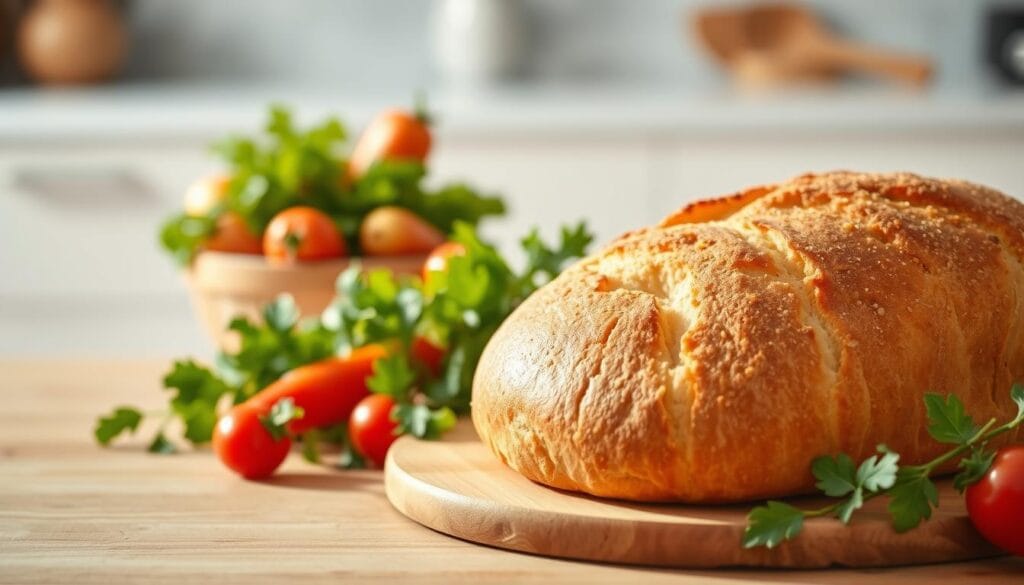
Choosing the right low calorie bread can change your weight loss game. Not all breads are the same. Making smart choices can help you manage your weight well.
When picking weight loss bread, keep these tips in mind:
- Look for breads with 50-70 calories per slice
- Select options with at least 5g of protein per slice
- Choose breads with 2-3g of fiber for better blood sugar control
Low calorie bread is a great tool for your diet. Swapping two slices of regular white bread (150 calories) for low-calorie ones (60 calories) saves 90 calories a day. This simple change could save you 33,000 calories a year.
“The right bread can support your weight loss goals without sacrificing taste or nutrition.”
Try using almond, coconut, and oat bran flour instead of regular flour. These flours cut calories and boost nutrients. Pick breads with a lower glycemic index to keep your energy steady and hunger in check.
Remember, controlling your portions is key. Even the best diet bread can lead to weight gain if eaten too much. Try to include low calorie bread in a balanced, calorie-aware diet.
Sourdough and Its Health Benefits
Explore the world of sourdough bread, a healthier option than regular low calorie bread. This ancient method of making bread offers unique health benefits.
Sourdough bread is a nutritional powerhouse thanks to its fermentation process. Unlike regular bread, sourdough’s natural fermentation boosts digestive health.
Fermentation Process Advantages
The sourdough fermentation process has several health benefits:
- Reduces bread’s glycemic index
- Improves nutrient absorption
- Creates beneficial prebiotics
- Breaks down complex carbohydrates more effectively
Digestive Health Benefits
Choosing sourdough bread means choosing a gut-friendly option. The lactic acid bacteria from fermentation help your digestive health by:
- Enhancing probiotic content
- Supporting a healthy gut microbiome
- Potentially reducing gluten sensitivity
Sourdough bread has 75-110 calories per slice, making it good for those watching calories. It also has a lower glycemic index, leading to more stable blood sugar levels than white bread.
Sourdough: Where tradition meets nutrition, creating a delicious path to better health.
Keto and Gluten-Free Low Calorie Options
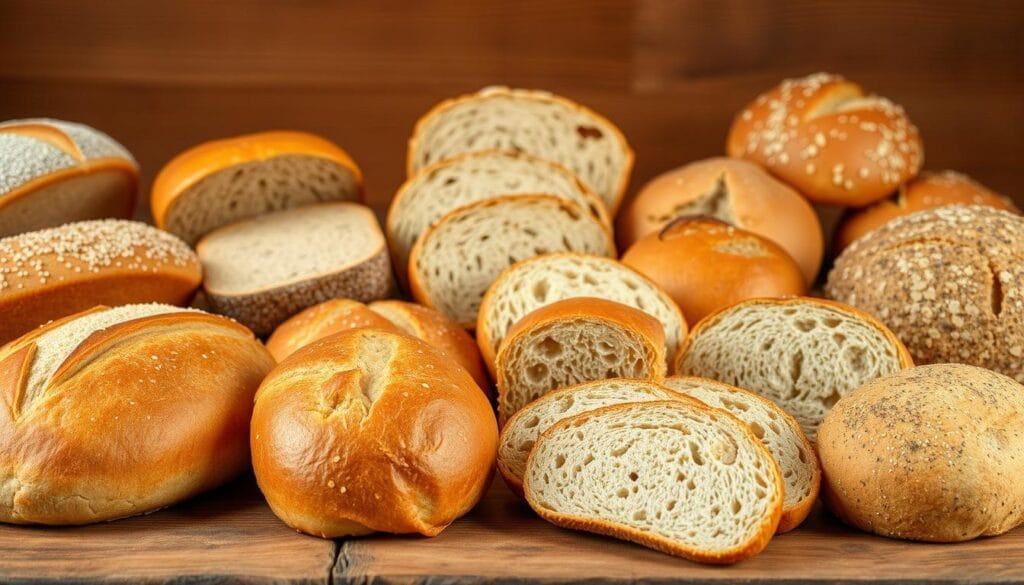
Finding the right low calorie bread can be tough for those on special diets. Keto bread and gluten-free bread are great for people with dietary needs. They keep calorie counts low.
Keto bread is perfect for health lovers. It has only 30 calories per slice and just 1 net carb. This helps keep blood sugar stable. It also has 8 grams of fiber per slice, which is good for your digestive health and can lower cholesterol.
- Typical keto bread contains minimal net carbohydrates
- Gluten-free bread options provide alternative nutritional profiles
- Low calorie bread supports weight management goals
When picking gluten-free low calorie bread, look at these important factors:
- Protein content (aim for 5g or more per slice)
- Fiber density (2-3g recommended)
- Total calorie count (50-70 calories per slice)
Alternative flours are key in making tasty low calorie bread. Almond flour, coconut flour, and psyllium husk are favorites. They help cut calories without losing flavor or texture.
Choosing the right bread can transform your dietary approach without sacrificing flavor or nutrition.
Specialty low calorie bread options let you enjoy bread while sticking to keto or gluten-free diets. Knowing what’s in your bread and its nutritional value helps you make better choices. This supports your health goals.
Shopping Tips for Low Calorie Bread
Finding healthy bread can be tough. It’s important to check the ingredients, nutrition, and how to store it.
Understanding Ingredient Lists
When picking diet bread, look at the ingredients closely. Here’s what to look for in low calorie bread:
- Whole grain flour should be the first ingredient
- It should have minimal added sugars
- It should have at least 3-5 grams of protein per slice
- It should have 2-3 grams of dietary fiber
- It should have less than 70 calories per slice
Smart Shopping Strategies
Look for healthy bread that helps with weight management. Here are some tips:
| Bread Type | Calories per Slice | Protein Content |
|---|---|---|
| Standard White Bread | 75-100 | 2 grams |
| Low Calorie Bread | 30-60 | 5+ grams |
Storage Recommendations
Storing bread right keeps it fresh longer. Here’s how:
- Keep opened bread in the fridge to stop mold
- Use containers that keep air out
- Freeze extra loaves for longer storage
- Always check the expiration dates
By following these tips, you’ll choose healthy bread that fits your diet goals.
Incorporating Low Calorie Bread into Your Diet
Adding low calorie bread to your diet can be tasty and healthy. It’s a clever way to enjoy sandwiches, toasts, and meals without overeating. By picking the right low calorie bread, you can cut down on calories every day.
Here are some fun ways to add healthy bread to your meals:
- Create protein-packed breakfast toasts with avocado and egg whites
- Make nutrition-dense sandwiches using lean proteins
- Prepare quick open-faced lunch options with vegetable toppings
- Use as a base for nutrient-rich snacks
When picking low calorie bread, look for high protein and fiber. Healthy Life and Sara Lee Delightful have bread with just 30-60 calories per slice. This small change can save you about 33,000 calories a year.
“Smart bread choices can be a game-changer in your nutrition journey.” – Nutrition Expert
Here are some tips for using low calorie bread wisely:
- Aim for bread with 5g protein per slice
- Choose options with 2-3g fiber
- Watch sodium content
- Balance bread with nutrient-rich toppings
Remember, low calorie bread is just one part of a healthy diet. Mix it with whole foods, lean proteins, and lots of veggies for the best nutrition.
Common Misconceptions About Bread and Weight Loss
Many think all bread is bad for weight loss. But, studies show this isn’t true. Low calorie bread can be a good choice for losing weight. It helps people stick to their diets better.
It’s a myth that all bread is unhealthy. Healthy options like whole grain bread are full of good stuff. They have lots of fiber, which is great for your gut and blood sugar.
Don’t think gluten-free means it’s healthier or has fewer calories. What matters is the bread’s nutritional value. Whole grain breads have more fiber and B vitamins than white bread. Choosing the right bread and controlling portions helps with weight loss.
Science backs up bread’s role in a healthy diet. A 16-week study found no weight difference between bread eaters and non-eaters. The key is picking high-quality, nutritious bread that fits your health goals.

